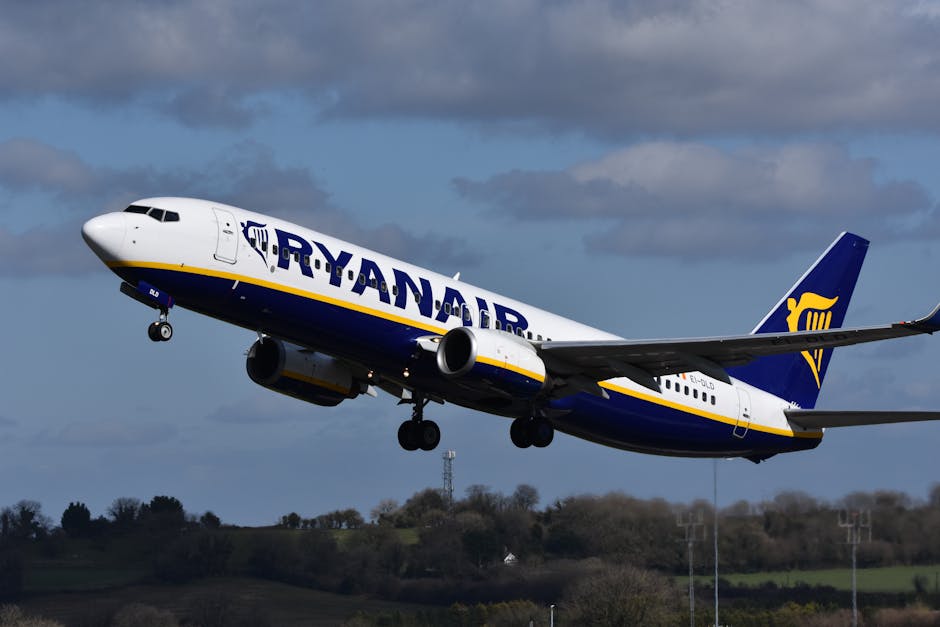The Rise of Budget Airlines: Pros, Cons, and Travel Tips
Budget airlines have undoubtedly transformed how we travel. Whether you're jetting off for a weekend city break or visiting family across the country, these carriers make it possible to explore new destinations without draining your wallet. But with cheap tickets come trade-offs, and it’s important to understand the full picture before clicking "book now."
Why Budget Airlines Appeal to Travelers

The biggest draw? Cost. Budget airlines like Ryanair, EasyJet, and Spirit Airlines often advertise fares that can feel too good to be true. A round trip for under $50? Yes, it’s possible, but there’s a catch. These fares typically include only the basics: a seat and a flight from point A to point B. That’s it.
For travelers willing to compromise on certain comforts, the savings can be significant. Think about it: why pay $300 for a two-hour flight when you can snag one for $40? This is especially attractive for students, families on a budget, or frequent fliers looking to stretch their travel funds.
Budget airlines also open up options for short-haul routes that might not otherwise exist. For instance, smaller cities in Europe or Southeast Asia have become far more accessible thanks to carriers like Wizz Air or AirAsia. This expansion offers travelers unique opportunities to explore lesser-known destinations.
The Trade-Offs You Need to Know
It’s easy to get caught up in those rock-bottom ticket prices, but what you see isn’t always what you get. Budget airlines thrive on upselling extras, everything from luggage fees to priority boarding can add up quickly. A $30 ticket can easily balloon into a $100 trip if you’re not careful.
- Baggage Fees: Many budget airlines charge not only for checked luggage but also for carry-ons beyond a small personal item. For example, Spirit Airlines charges between $39 and $79 for carry-on bags depending on when you pay.
- No Frills: Don’t expect free snacks or drinks on board. Even water might cost you a few dollars, something seasoned travelers know to prepare for by bringing their own reusable bottle (filled after security).
- Limited Legroom: To maximize capacity, seats are often smaller and more cramped than those on traditional airlines. If you’re over six feet tall, this could make even short flights feel long.
- Strict Policies: Budget airlines enforce their rules rigorously. Show up late? Forget your boarding pass? You might face hefty fines or even miss your flight entirely.
To avoid unpleasant surprises, read the fine print and factor in potential extras when comparing costs with traditional airlines. Sometimes paying a little more upfront with a full-service carrier could actually save you money (and hassle) in the long run.
Tips for Flying Budget Airlines Like a Pro
If you’re ready to give budget airlines a try (or already love them) there are strategies to ensure smooth sailing (or flying). Here are some tried-and-true tips from seasoned travelers:
- Travel Light: Stick to the airline’s free baggage allowance, which is usually limited to a small backpack or purse that fits under the seat in front of you. If you need more space, prepay for baggage online, it’s always cheaper than at the airport.
- Check Airports and Flight Times: Budget airlines often fly out of secondary airports located farther from city centers (e.g., Beauvais instead of Paris Charles de Gaulle). Factor in transportation costs and time when planning your trip.
- Arrive Early: These airlines tend to operate on tight schedules, and missing your check-in window can mean losing your ticket altogether. Arriving at least two hours before departure is a safe bet.
- Bring Snacks: Stock up on non-liquid goodies before boarding, think granola bars or sandwiches. Avoid overpriced airport snacks or onboard purchases unless absolutely necessary.
- Keep an Eye on Sales: Budget carriers frequently run promotions with incredible discounts on flights. Sign up for newsletters or follow them on social media so you don’t miss out.
Who Benefits Most?
Budget airlines aren’t just changing travel habits, they’re also impacting tourism industries worldwide. Smaller cities that previously saw little tourist activity now welcome thousands of visitors each year thanks to low-cost carriers. Take Girona in Spain, which has become a gateway for those flying Ryanair into nearby Barcelona while boosting its local economy along the way.
On an individual level, these airlines democratize travel by making it accessible to more people. Families who couldn’t afford vacations before now have options within their budget, while younger travelers can enjoy spontaneous getaways without financial strain. For some, this freedom outweighs any inconvenience caused by less legroom or extra fees.
A Balanced Perspective
No airline is perfect (and budget carriers are no exception) but they serve an important role in modern travel.They enable millions of people to explore places they might never have reached otherwise. On the flip side, navigating their quirks requires patience, preparation, and sometimes a bit of compromise. If you approach budget airlines with realistic expectations and do your homework beforehand, they can be an excellent choice for both frequent fliers and occasional adventurers alike. After all, isn’t it worth giving up some perks if it means experiencing something new?
Just remember: pack light, stay organized, and always read those terms and conditions!
This article was generated by AI